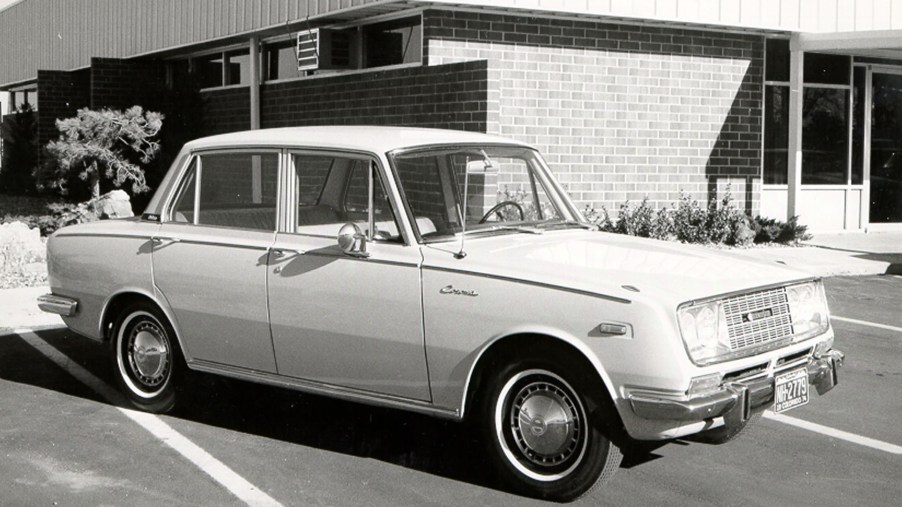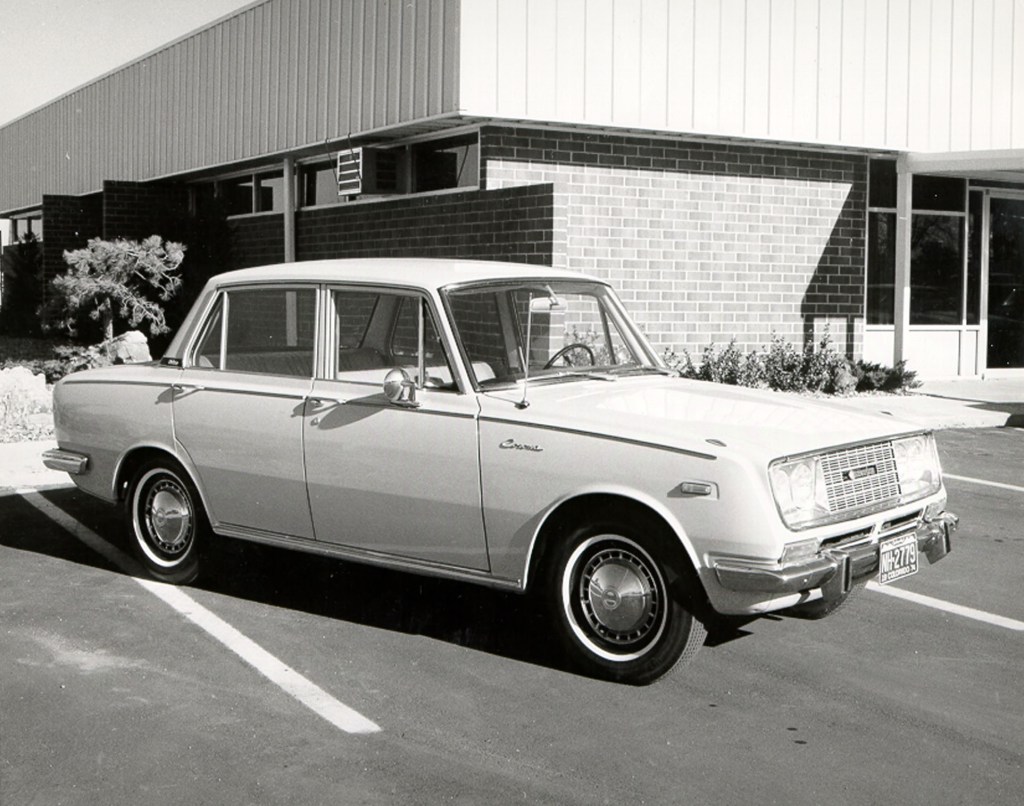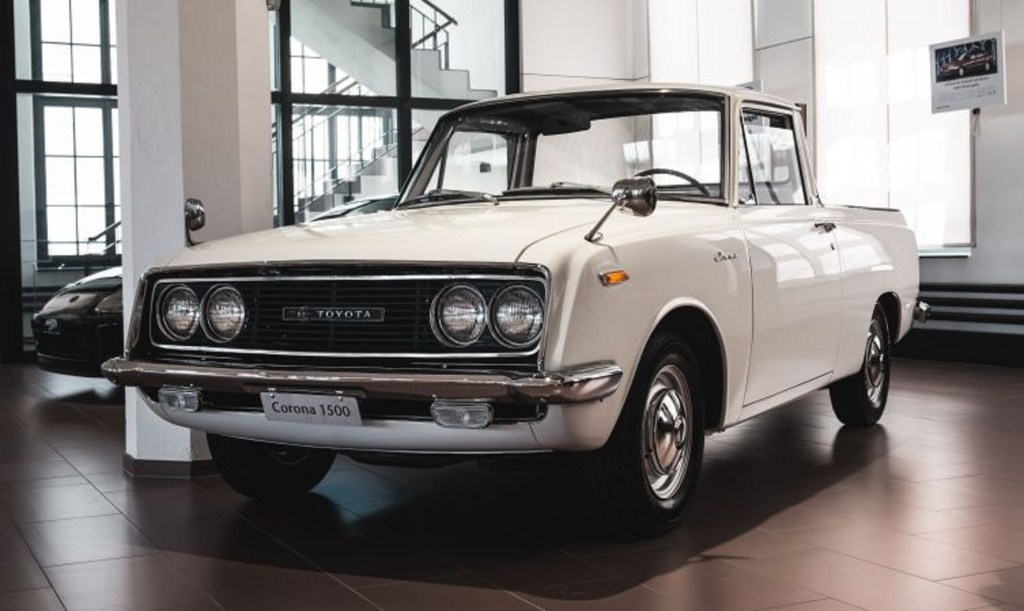
Barn-Find 1966 Corona Is a Rare Piece of Toyota Camry History
The Camry doesn’t get every enthusiast’s pulse racing, but its practical, reliable, easy-to-live-with nature makes it a commuter grand-slam. Little wonder, then, that the Camry has been the best-selling Toyota sedan for years. But it didn’t spring up out of nowhere. And if you want to know its story, look no further than a recent Oklahoma barn find, the Toyota Corona.
Before the virus, before the Toyota Camry, there was the Toyota Corona

First things first, know that the Toyota Corona has nothing to do with the coronavirus. The car’s name dates to 1957, decades before the pandemic. Toyota historians will note that 1957 is also when the company exported its first car to the US. That wasn’t the Corona, though, but the Crown.
The Corona—which means ‘crown’ in Latin—was Toyota’s second attempt at offering a passenger car in the US. Or rather its third. Stick with me, this gets a little complicated.
When Toyota launched the Corona in 1957, it sold in Japan under the company’s Toyopet brand. However, when it brought the second-gen Corona to the US alongside the FJ40 Land Cruiser, it gained a different headgear-themed name: Tiara.

Then in 1966, Toyota redesigned the sedan with American needs in mind, Car and Driver explains. This was technically the third-gen Toyota Corona, and it dispensed with the Tiara and Toyopet bits entirely. Alongside the original Corolla, also launched in 1966, it helped establish Toyota as a serious player in the American car industry. And along with the Land Cruiser, it tripled Toyota’s US sales between 1965 and 1966, Car and Driver claims.
Although not as big as its American contemporaries, the 1966-1970 Toyota Corona’s small size made it agile. Plus, it was quicker than the Beetle and Chevy Nova, not to mention cheaper than the latter, Autoweek says. More importantly, it was also economical and reliable. And the European Toyota Corona pickup—yes, there was a pickup—made for a solid workhorse. In addition, back in LA, none less than Boyd Coddington crowned a lowrider Corona as ‘the coolest custom in LA’ in 1994.
Toyota updated the Corona over the years, with the last US-market version running from 1979-1982. Then, in 1983, Toyota introduced its replacement, the first-gen Camry. And the rest is history.
A rare first-gen Toyota Corona barn find just sold on Bring a Trailer
As with Honda’s early US-market cars, not many of Toyota’s first American efforts survived the years unscathed. However, some first-gen Toyota Coronas are still kicking around. And recently, someone pulled a 1966 survivor from a barn in Seminole, Oklahoma to sell on Bring a Trailer.
While a 1966 Toyota Corona is obviously very different from a 2022 Camry, there’s one difference that doesn’t stem from 50-odd years of technology. Every Camry, including the latest Camry TRD, is front-wheel drive. The Corona, though, is a RWD car.
By modern standards, the 1966 Toyota Corona is rather spartan. But in the ‘60s, an AM radio, 12-volt outlet, heater, locking glovebox, and lap belts were decent equipment for a sedan this size. Admittedly, its carbureted 1.9-liter four-cylinder only makes 90 hp and it’s connected to a two-speed automatic. So, even by ‘60s standards, it’s not fast, Autoweek reports.
Still, the Toyota Camry has rarely prioritized speed over reliability and user-friendliness. Why should its ancestor be any different?
How much does a classic Corona cost?
Although US Toyota Corona sales stopped after 1982, the nameplate lived on overseas until 2003. So, theoretically, you could import one of the later models into the US if they’re at least 25 years old. But let’s focus on the classic US-market ones.
The 1966 Corona described earlier sold on BaT for $14,500. Given its condition, that’s a bit on the high side, though its originality and age likely played a factor. However, that $14.5K final price isn’t that egregious. Based on past Mecum auction results, $8000-$10,000 appears to be the floor for classic clean Coronas these days. Corona wagons and pickups often command higher prices, especially Mk II wagons.
As it turns out, there is a Toyota Camry that’s collectible. It just so happens that it’s the Camry’s grandparent.
Follow more updates from MotorBiscuit on our Facebook page.


